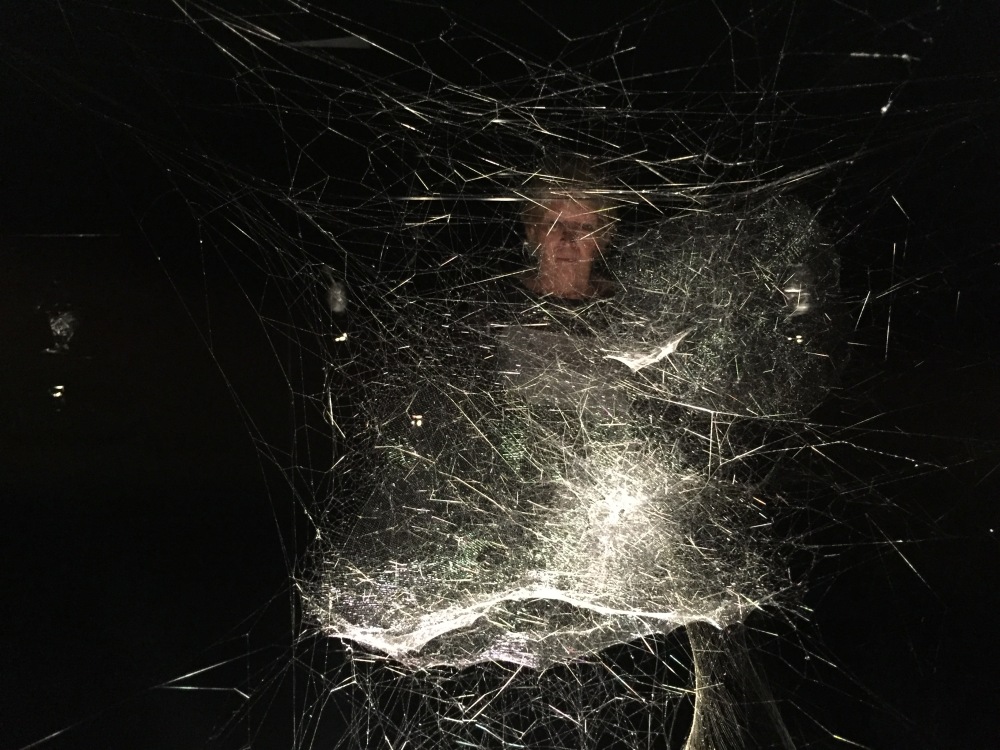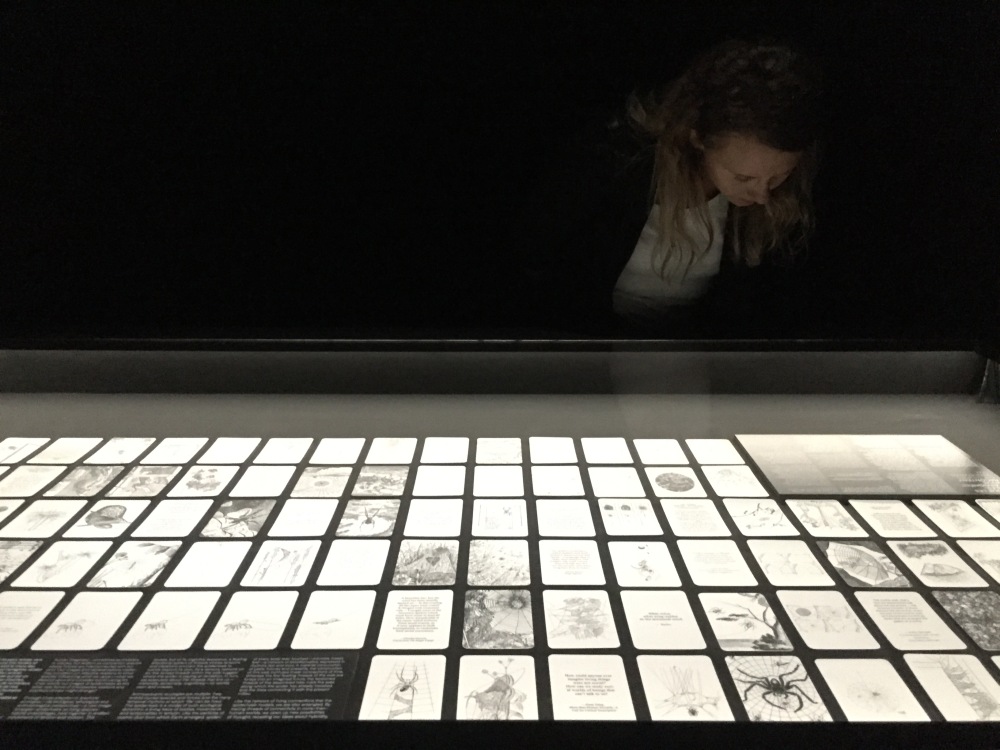This year the Palais de Tokyo has chosen to give it’s 4th “carte blanche” to the Argentinian artist Tomás Saraceno. The carte blanche is not a normal retrospective, as the name indicates its a once in a lifetime opportunity giving artists total freedom to fill 13,000 m2 as they please. This year, Saraceno together with the curator Rebecca Lamarche-Vadel, extends to his audience an invitation to see the world through a different lens.
It’s not exactly through his perspective but rather a spider’s viewpoint that Saraceno tries to approach the world. The first rooms are plunged into darkness, there’s few light in them and it’s easy to fall; and then after roaming in a dark labyrinth you see them, different species of spiders in Plexiglass boxes threading fragile webs, constructing architectures that work and react to our presence. The exploit is the common tacit effort coming from spiders to give shape to a system that will be functional and would adapt to the boxes, thus showing us the spider’s resilience and ability to rebuild their habitat.

Tomás Saraceno, Webs of At-tent(s)ion, 2018
Nevertheless, there’s more to that as the spiders webs, through complex mechanisms, create vibrations and music, Saraceno does not merely want to display fascinating creatures, instead he wants to give them the opportunity to become artists – an activity representative of humanness. The purpose is to expand our understanding of life by bringing to the public eye other forms of existence to better address climate change as well as other issues damaging our planet.
In another artwork called Sounding the Air, spider threads are installed in the exhibition space, our movements combined with the air create again vibrations that are translated into sonic sequences. The threads are thus strings, our movements and spider’s threads are amplified making them visible, total artworks, instruments in the great animal orchestra. Saraceno shows us that humans are not the only ones capable of creating art, animals can too, further meaning that we are equally part of a web of life, there’s no hierarchy in our ecosystem and we rely on each other for our survival.

Tomás Saraceno, Sounding the Air, 2018
For years we believed – and some still believe – that our species was larger than life itself, this is a narrative that has been refuted by scientists, art historians, artists and in the academic world alike. This awakening corresponds also to the Anthropocene, an era in which humans are accountable for the planet’s current climate crisis. However, the term remains laconic for it’s inadequacy to embrace different imaginaries. T.J Demos in his book Against the Anthropocene, emphasizes that terminology is key to better include non-white individuals.
Even if Saraceno himself uses the term Anthropocene, his work sees the world through a political and inclusive perspective. And he does so by diversifying the social protest , by connecting social movements and liberating knowledge. Speculation is part of what T.J Demos calls a crucial mission for artists, the mission being to develop solidarity among different disciplines. One of the most illustrative works of this type of kinship is Aerocene, a project aiming at freeing humans from fossil fuels, it’s a more ethical alternative that operates via the sun’s heat and infrared radiation. The beauty of this project lies on its power to gather people together in order to get rid from the fossil fuel imperative and to imagine other alternatives.

Tomás Saraceno, Web Entanglements, 2018
For years we believed – and some still believe – that our species was larger than life itself, this is a narrative that has been refuted by scientists, art historians, artists and in the academic world alike. This awakening corresponds also to the Anthropocene, an era in which humans are accountable for the planet’s current climate crisis. However, the term remains laconic for it’s inadequacy to embrace different imaginaries. T.J Demos in his book Against the Anthropocene, emphasizes that terminology is key to better include non-white individuals.
Even if Saraceno himself uses the term Anthropocene, his work sees the world through a political and inclusive perspective. And he does so by diversifying the social protest , by connecting social movements and liberating knowledge. Speculation is part of what T.J Demos calls a crucial mission for artists, the mission being to develop solidarity among different disciplines. One of the most illustrative works of this type of kinship is Aerocene, a project aiming at freeing humans from fossil fuels, it’s a more ethical alternative that operates via the sun’s heat and infrared radiation. The beauty of this project lies on its power to gather people together in order to get rid from the fossil fuel imperative and to imagine other alternatives.

Tomás Saraceno, Aerographies, 2018
Inventiveness is mandatory to face the challenge that is climate change and ensuing social injustice around the world. Aerographies, is somehow a piece that seeks to inspire change, influenced by Guy Debord’s psychogeographies, the artwork explores architecture’s role in politics as well as its impact in the state of mind of people surrounded by it. Saraceno’s work is a transformation of Mumbai’s polluted air into a poetic language, the ink he uses comes from toxic pollution which materialises our ecological footprint, and at the same time a thorough investigation on how architecture conveys an ideology. The shape of the the frame in which the pen travels is square which to me manifests Western’s narrow frame of thought.
Aerographies is air’s fleeting cartography as well as a representation of human industrial activity in the world. Considering the implication of the discipline in creating colonial empires, this installation – due to his rectangular shape – symbolises to me Westerners obsession to divide the world and to control the public perception of the latter.

Tomás Sareceno, 2018
Perhaps am I going too far interpreting Saraceno’s work, but I believe this is one of the artist’s potentials, to give us wings to takeoff, to still believe that utopias are not as impossible as they seem today, to comprehend spider’s role in the web of life, to convince us that spiders are works of art.
#art #contemporaryart #tomas saraceno #carteblanche #palaisdetokyo #paris #onair #spiders #argentinianartist #artist #yetanotherblog #environment #estherschipper #jtdemos #aerocene #artcontemporain #artiste #artist